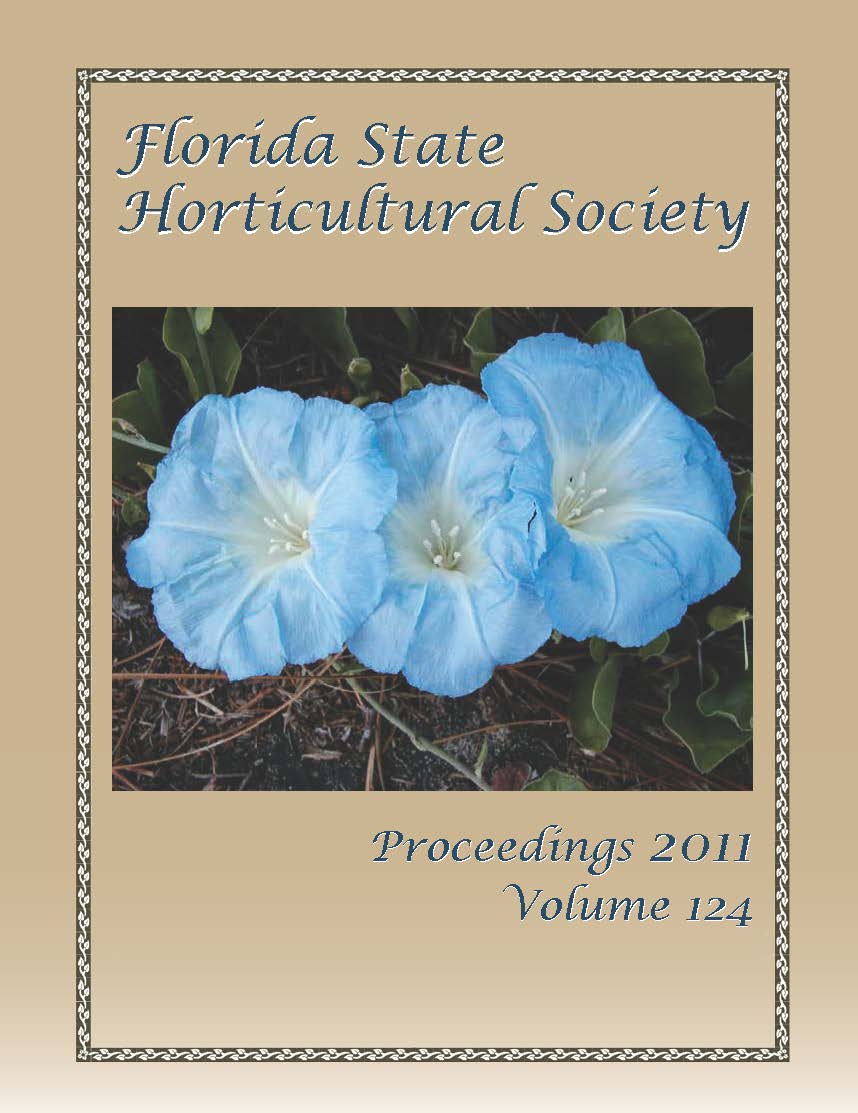Published 2011-12-01
Keywords
- Xanthomonas citri subsp. citri,
- copper rates,
- fruit susceptibility,
- premature fruit drop
Abstract
Protection of ‘Hamlin’ orange fruit from infection by Xanthomonas citrisubsp. citri, the cause of citrus canker, is necessary to reduce premature fruit drop. The objective was to evaluate copper formulations for control of fruit infection and drop in 6- to 8-year-old ‘Hamlin’ trees. Copper sprays were applied at 21-day intervals after fruit reached 0.5- to 1.0-cm (0.25 to 0.50 inches) diameter. The period of susceptibility of fruit to canker infection and fruit drop was established by increasing the number of applications through the fruit growth period. Separate treatments ended at each 21-day interval so that there were four to seven applications per season. In 2008, early season infection occurred during rains before copper sprays commenced in late April. Subsequently, five sprays of copper formulations at rates exceeding 0.5 kg/ha (1.1 lb/acre) metallic copper significantly reduced incidence of lesions on fruit. Early season fruit disease and cumulative fruit drop were highly correlated among copper treatments (r= 0.95). Although a tropical storm in early August promoted disease on fruit late in the season, late season fruit disease and fruit drop were less well correlated (r = 0.78). In 2008 and 2009, additional sprays after the period of early fruit susceptibility did not further reduce canker incidence or fruit drop. In 2009, copper sprays were initiated before significant spring rainfall and the incidence of fruit disease and fruit drop were lower and the correlation of early season fruit disease was less positively correlated with fruit drop (r = 0.52) compared to 2008. In 2010, disease on fruit and premature drop were not significantly different from the untreated checks although fruit disease and early season infection were still significantly correlated (r= 0.70). Overall, there was little difference in efficacy among copper formulations, although control was reduced for treatments with copper sulfate pentahydrate at lower rates of metallic copper. In each season, copper treatments controlled fruit drop by ≈50% compared to the untreated check; however, as ‘Hamlin’ trees grew from 6 to 8 years of age, canker incidence dropped due to the development of hedgerows, which reduced windblown rain penetration into the grove. Hence, fewer copper sprays will be necessary after canopy closure promotes an internal windbreak effect.

